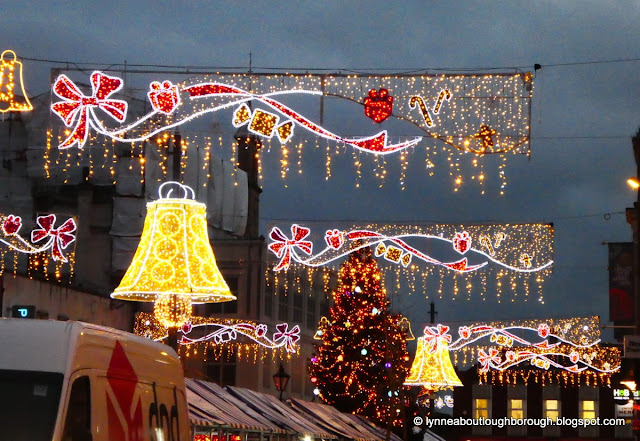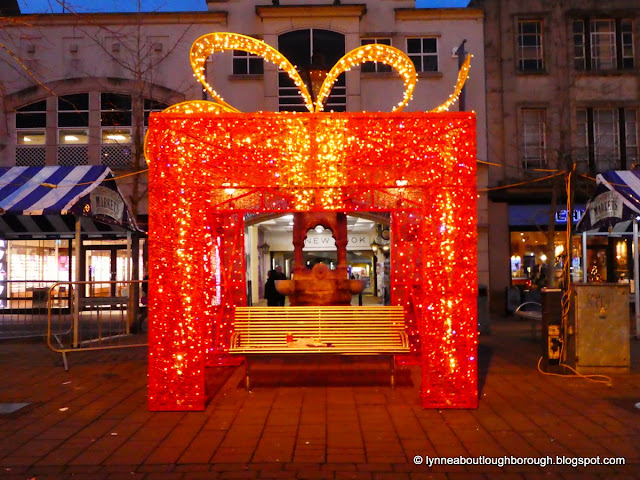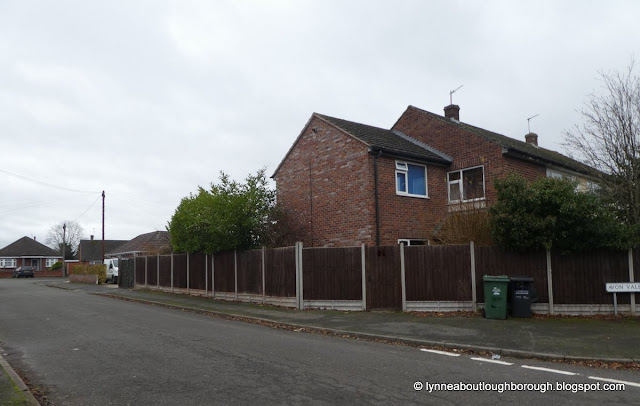Last time on the blog, we looked at some of the families who had lived at Shelthorpe House
from its creation around 1866, when Richard Warner Hole and his wife lived
there, through the time of Herbert and Clara Paget, to the time of Charles
Lewes Dashwood, who by late 1880 had left the property. So what happened next?
The 1881
census return records William Frederick Beardsley with his wife, Roza Luis (nee
Fernandes), who he had married in Wakefield in 1874, living at Shelthorpe House.
The size of the property would have been eminently suitable for the Beardsleys
who at this time already had five children, whose births had been registered at
Barrow-on-Soar. I wonder if the lodge house, where George Thompson, the groom,
and his wife, Caroline, and five children lived, was equally suited to a large
family?
William and
Roza’s family continued to grow whilst they were living at Shelthorpe House,
and another son, Arthur was born in 1883, his birth being registered in
Loughborough in the third quarter, i.e. July-August-September. Meanwhile, the
groom associated with the house was now Joseph Cross and he and his wife Ellen,
had a daughter Constance who was born in July 1883.
A puzzling piece
of the jigsaw which came to light during this research was a newspaper article
from 1884 which reported on a person called Fanny Fearey who lived at
Shelthorpe House with her mother, and who accused someone of stealing her umbrella
when she was in Sanders’ Vaults. I can only assume she was a servant?
While the
Beardslesy were living at Shelthorpe House, Mrs Roza Luis Beardsley was very
socially active! In August 1887 she opened the grounds of Shelthorpe House to
the gathering of the Loughborough Habitation of the Primrose League of which
she was the current Dame President. When the same group had their March 1888
meeting in the Oddfellows Hall on Sparrow Hill, Mrs Beardsley was re-elected to
the position of Dame President, and Mr Beardsley was elected as Ruling
Councillor.
Six months
later, the Beardsleys were on the move! The birth of their daughter, Mabel in
August 1888 was probably what prompted the move. And so it was that in March
1889 Shelthorpe House was again offered for sale, this time the auction taking
place at the Bell Hotel in Leicester.
The auction
details described Shelthorpe House as a freehold residential property, suitable
for use as a family home, or a hunting residence. The accompanying cottage was
well-built, there were outbuildings, and stables, all situated in gardens with
orchards and paddocks, in all about 14 acres. The house itself had a spacious
entrance hall, three large reception rooms, eight bedrooms, offices, modern
conveniences, and good cellars. Included in the sale were the coach house,
washing box, harness room with a loft above, loose horse boxes for about 7 horses,
which could be extended to fit 10. The town of Loughborough was a short
distance away, the Quorn Kennels were within about 2 miles, the Charnwood
Forest was within easy reach, the railway service was excellent – 2 hours and
40 minutes to London, 20 minutes to Leicester, and 25 minutes to Nottingham -
and the nearby schools were good.
The sale of
Shelthorpe House was successful, and the price paid was £4,000. The new owner
was John William Taylor, snr., the bellfounder, who with his extensive family
had moved from Bellfoundry House on Freehold Street. In May 1889, the council
agreed to extend the water main from Leicester Road to Shelthorpe House, on the
proviso that Mr Taylor paid water rates at an annual amount which was equal to
10 % on the outlay. A year later, in April 1890, the building plans committee
agreed to Mr Taylor building an entrance lodge to Shelthorpe House, which was
described as his ‘new business premises’.
 |
| The Bellfoundry on Freehold Street |
Like Mrs Roza
Luis Beardsley, John William Taylor, snr., was involved in the Primrose League
– although not as its Dame President!!! In July 1890, Mr Taylor hosted the
annual summer fete of the Loughborough Habitation of the Primrose League and
the local Conservative party in the grounds of Shelthorpe house which were
profusely decorated, making a particularly pleasing background for photographs.
In the evening the grounds were lit by Chinese lanterns.
At the time
of the 1891 census returns, John William Taylor snr. was living with his wife,
Eliza and both were aged 64. Offspring also living with them at Shelthorpe
House were Mary E., aged 36; Charles T. aged 38; Edmund Denison aged 26; Horace
Newcombe aged 23, and Owen D. aged 20. The were also 3 servants – Thomas Gent
16, Mary Bowley 28, and Caroline Taylor 24. One of John William and Eliza’s
other children, Pryce, who wasn’t living with them, married Helena Gertrude
Bardsley of Ivy Cottage, Loughborough, at the parish church, later that same
year.
Members of
the Taylor family supported good causes, and in 1894, Horace Newcombe donated
10s. to the church voluntary schools fund. Meanwhile, the lodge to Shelthorpe
House was occupied by Alfred Rupert West and his wife Mary in 1897. In July
1899, the scholars of the Holy Trinity Sunday School had their annual treat in
the grounds of Shelthorpe House and the Borough Band entertained, just 21 years
after the consecration of the Holy Trinity Church. A few months later, produce from
Shelthorpe House was included in the Harvest Festival decoration at the parish church of All Saints.
Loughborough
had held an annual agricultural show since about 1848, and in the 52nd annual
show of 1900, John William Taylor’s horse came in as the reserve in the brood
mare with foal class. In the summer of 1901, the 10th annual wool sale was held
in the Drill Hall, and Horace Newcombe Taylor provided fleece for sale. A few
months earlier, at the time of the 1901 census, John William Taylor snr, and
his wife Eliza, both according to the census return now aged 63, were living at
Shelthorpe House with offspring, Edmund Denison aged 36, Horace Newcombe aged
33, and Owen J. aged 30. The family had three servants – Sarah Bowley aged 29,
Rosa Aldridge aged 25, and Ernest Wilson aged 14. Alfred Rupert West, the
gardener, was still living at Shelthorpe Lodge, with his wife and two
daughters.
The grounds
of Shelthorpe House continued to be made available for Primrose League events.
However, due to poor weather conditions, the one in August 1905 wasn’t particularly
well-attended, but people danced to the music played by the Borough Band, and listened
to a concert from a group from Leicester.
In March
1906, John William Taylor (25th March 1885 – 15th September 1916) came of age,
but his 21st birthday wasn’t celebrated at Shelthorpe House, but rather at the
bellfoundry, where the yard was covered and decorated with flags, and the
tables and platform were decorated with flowers.
Sadly, only
eight months after the celebrations of John William Taylor’s 21st birthday,
John William Taylor, snr., his grandfather died, aged 79. In April 1907, the
will of John William Taylor, snr., of Shelthorpe House was proved, and the
estate valued at £47,614 gross.
 |
| Memorial headstone to John William Taylor, snr., Eliza his wife, and Edmund Denison Taylor, their son |
Whether or
not Shelthorpe House was sold, or offered for let, I am not sure, however, by
the time of the 1911 census return, the occupier was William Smith Dodgson, aged 50, a
retired farmer and quarry owner from Monk Bretton in Yorkshire. He was living
at Shelthorpe House with his wife Annie aged 45, son Rupert aged 6, daughter
Olive aged 5, and stepson A. Norman Mullinson aged 23. There were also 5
servants listed.
William Smith
Dodgson died on 7th January 1918. His will was proved on 22nd March 1918 by his
widow Annie Augusta Dodgson, and Alfred Clegg, a solicitor. Effects were
£80,158 17s. 11d. The address on the probate record was mistyped, and appeared
as Skelthorpe House, rather than Shelthorpe House.
And here we
will leave the history of Shelthorpe House and its occupiers until next time
when we will consider the final years in the life of the house.
____________________________________
Posted by
lynneaboutloughborough
With apologies for
typos which are all mine!
_______________________________________________
Thank you for
reading this blog.
Copyright:
The copyright
© of all content on this blog rests with me, however, you are welcome to
quote passages from any of my posts, with appropriate credit. The correct
citation for this looks as follows:
Dyer, Lynne
(2024). Shelthorpe House – the middle years. Available from: https://lynneaboutloughborough.blogspot.com/2024/12/shelthorpe-house-middle-years.html [Accessed 8 December 2024]
Take down
policy:
I post no
pictures that are not my own, unless I have express permission so to do. All
text is my own, and not copied from any other information sources, printed or
electronic, unless identified and credited as such. If you find I have posted
something in contravention of these statements, or if there are photographs of
you which you would prefer not to be here, please contact me at the address
listed on the About Me page, and I will remove these.
External
Links:
By including
links to external sources I am not endorsing the websites, the authors, nor the
information contained therein, and will not check back to update out-of-date
links. Using these links to access external information is entirely the
responsibility of the reader of the blog.
Blog
archive and tags:
If you are
viewing this blog in mobile format, you will not be able to easily access the
blog archive, or the clickable links to various topics. These can be accessed
if you scroll to the bottom of the page, and click 'View Web Version'.
Alternatively, there is also a complete list of posts, which when clicked will
take you to the page you are interested in.
Searching
the blog:
You can
search the blog using the dedicated search box that appears near the top of the
blog when viewed in the web version. Alternatively, you can search using your
usual search engine (e.g. Bing, Google, DuckDuckGo etc.) by following this
example:
site: https://lynneaboutloughborough.blogspot.com/ “Radmoor
House”
NOTE – the words you’re actually looking
for must be in “” and the first of these must be preceded by a space
Thank you for
reading this blog.
Lynne

















































